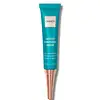What's inside
What's inside
 Key Ingredients
Key Ingredients

 Benefits
Benefits

 Concerns
Concerns

 Ingredients Side-by-side
Ingredients Side-by-side

Thujopsis Dolabrata Branch Extract
Skin ConditioningCarthamus Tinctorius Seed Oil
MaskingOryza Sativa Bran Oil
EmollientGlycerin
HumectantStearic Acid
CleansingCetyl Alcohol
EmollientTheobroma Cacao Seed Butter
EmollientButyrospermum Parkii Butter
Skin ConditioningTocopheryl Acetate
AntioxidantPhenoxyethanol
PreservativeAloe Barbadensis Leaf
MaskingSodium Stearate
CleansingGlyceryl Stearate
EmollientXanthan Gum
EmulsifyingUndaria Pinnatifida Extract
Skin ConditioningHydrolyzed Lycium Barbarum Fruit
Skin ConditioningRetinyl Palmitate
Skin ConditioningEthylhexylglycerin
Skin ConditioningLavandula Angustifolia Oil
MaskingThujopsis Dolabrata Branch Extract, Carthamus Tinctorius Seed Oil, Oryza Sativa Bran Oil, Glycerin, Stearic Acid, Cetyl Alcohol, Theobroma Cacao Seed Butter, Butyrospermum Parkii Butter, Tocopheryl Acetate, Phenoxyethanol, Aloe Barbadensis Leaf, Sodium Stearate, Glyceryl Stearate, Xanthan Gum, Undaria Pinnatifida Extract, Hydrolyzed Lycium Barbarum Fruit, Retinyl Palmitate, Ethylhexylglycerin, Lavandula Angustifolia Oil
Water
Skin ConditioningCocos Nucifera Oil
MaskingButyrospermum Parkii Butter
Skin ConditioningCarthamus Tinctorius Seed Oil
MaskingGlycerin
HumectantGlyceryl Stearate
EmollientCera Alba
EmollientStearic Acid
CleansingCalcium Pantothenate
Hydrolyzed Silk
HumectantNiacinamide
SmoothingPhenoxyethanol
PreservativeUrea
BufferingParfum
MaskingSimmondsia Chinensis Seed Oil
EmollientTocopherol
AntioxidantRetinol
Skin ConditioningSorbic Acid
PreservativeCholecalciferol
Water, Cocos Nucifera Oil, Butyrospermum Parkii Butter, Carthamus Tinctorius Seed Oil, Glycerin, Glyceryl Stearate, Cera Alba, Stearic Acid, Calcium Pantothenate, Hydrolyzed Silk, Niacinamide, Phenoxyethanol, Urea, Parfum, Simmondsia Chinensis Seed Oil, Tocopherol, Retinol, Sorbic Acid, Cholecalciferol
Ingredients Explained
These ingredients are found in both products.
Ingredients higher up in an ingredient list are typically present in a larger amount.
This ingredient is also known as shea butter. It is an effective skin hydrator and emollient.
Emollients help soothe and soften your skin. It does this by creating a protective film on your skin. This barrier helps trap moisture and keeps your skin hydrated. Emollients may be effective at treating dry or itchy skin.
Shea butter is rich in antioxidants. Antioxidants help fight free-radicals, or molecules that may harm the body. It is also full of fatty acids including stearic acid and linoleic acid. These acids help replenish the skin and keep skin moisturized.
While Shea Butter has an SPF rating of about 3-4, it is not a sunscreen replacement.
Shea butter may not be fungal acne safe. We recommend speaking with a professional if you have any concerns.
Learn more about Butyrospermum Parkii ButterCarthamus tinctorius seed oil comes from safflower, one of humanity's oldest crops.
Safflower seed oil contains a high percentage of linoleic acid and oleic acid. It also contains Vitamin E. These three components are effective moisturizers.
Vitamin E helps nourish your skin's lipid barrier. It is also a potent antioxidant. Antioxidants help fight free-radical molecules, or unstable molecules that may damage your skin cells.
Due to its high fatty acid content, this ingredient may not be malassezia folliculitis safe.
Thoughout history, safflower has been used for dying fabrics and in food as a saffron substitute.
Learn more about Carthamus Tinctorius Seed OilGlycerin is already naturally found in your skin. It helps moisturize and protect your skin.
A study from 2016 found glycerin to be more effective as a humectant than AHAs and hyaluronic acid.
As a humectant, it helps the skin stay hydrated by pulling moisture to your skin. The low molecular weight of glycerin allows it to pull moisture into the deeper layers of your skin.
Hydrated skin improves your skin barrier; Your skin barrier helps protect against irritants and bacteria.
Glycerin has also been found to have antimicrobial and antiviral properties. Due to these properties, glycerin is often used in wound and burn treatments.
In cosmetics, glycerin is usually derived from plants such as soybean or palm. However, it can also be sourced from animals, such as tallow or animal fat.
This ingredient is organic, colorless, odorless, and non-toxic.
Glycerin is the name for this ingredient in American English. British English uses Glycerol/Glycerine.
Learn more about GlycerinGlyceryl Stearate is a mix of glycerin and stearic acid.
It is used to stabilize the mixing of water and oil ingredients. By preventing these ingredients from separating, it can help elongate shelf life. It can also help thicken the product's texture.
As an emollient, it helps soften skin and supports barrier-replenishing ingredients.
In cosmetics, Glyceryl Stearate is often made from vegetable oils or synthetically produced.
This ingredient may not be fungal-acne safe
Fun fact: The human body also creates Glyceryl Stearate naturally.
Learn more about Glyceryl StearatePhenoxyethanol is a preservative that has germicide, antimicrobial, and aromatic properties. Studies show that phenoxyethanol can prevent microbial growth. By itself, it has a scent that is similar to that of a rose.
It's often used in formulations along with Caprylyl Glycol to preserve the shelf life of products.
Stearic Acid is a fatty acid. It is an emollient, emulsifier, and texture enhancer.
As an emollient, stearic acid helps soften skin. It aids the skin's protective barrier by preventing water loss. It also provides a gentle cleansing effect without stripping away natural oils.
Stearic acid may also be used to enhance the texture of products. It can add volume and stabilize ingredients such as water and oil. This can help water and oil ingredients from separating.
Sources of stearic acid include animal or vegetable fats/oils such as coconut or shea. It can be naturally found in butter, cocoa butter, shea butter, vegetable fats, and animal tallow.
This ingredient may not be Malassezia folliculitis, or fungal-acne safe.
Learn more about Stearic Acid